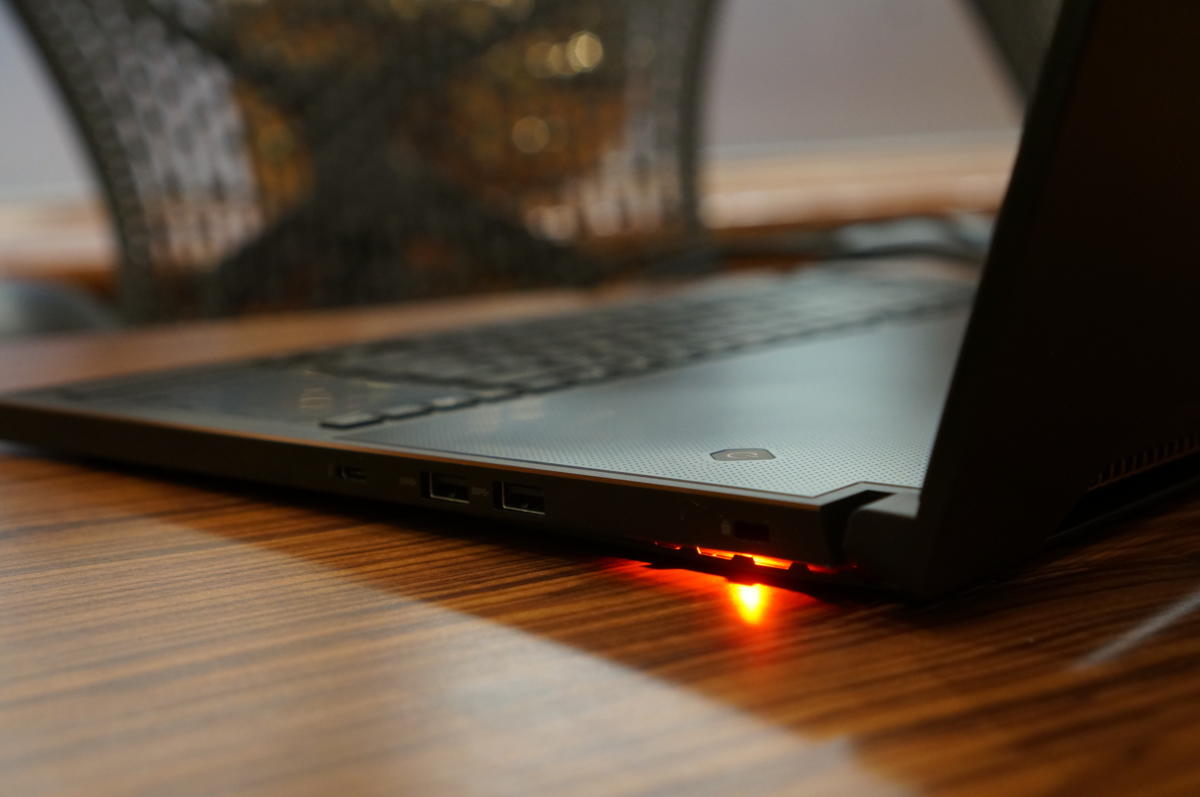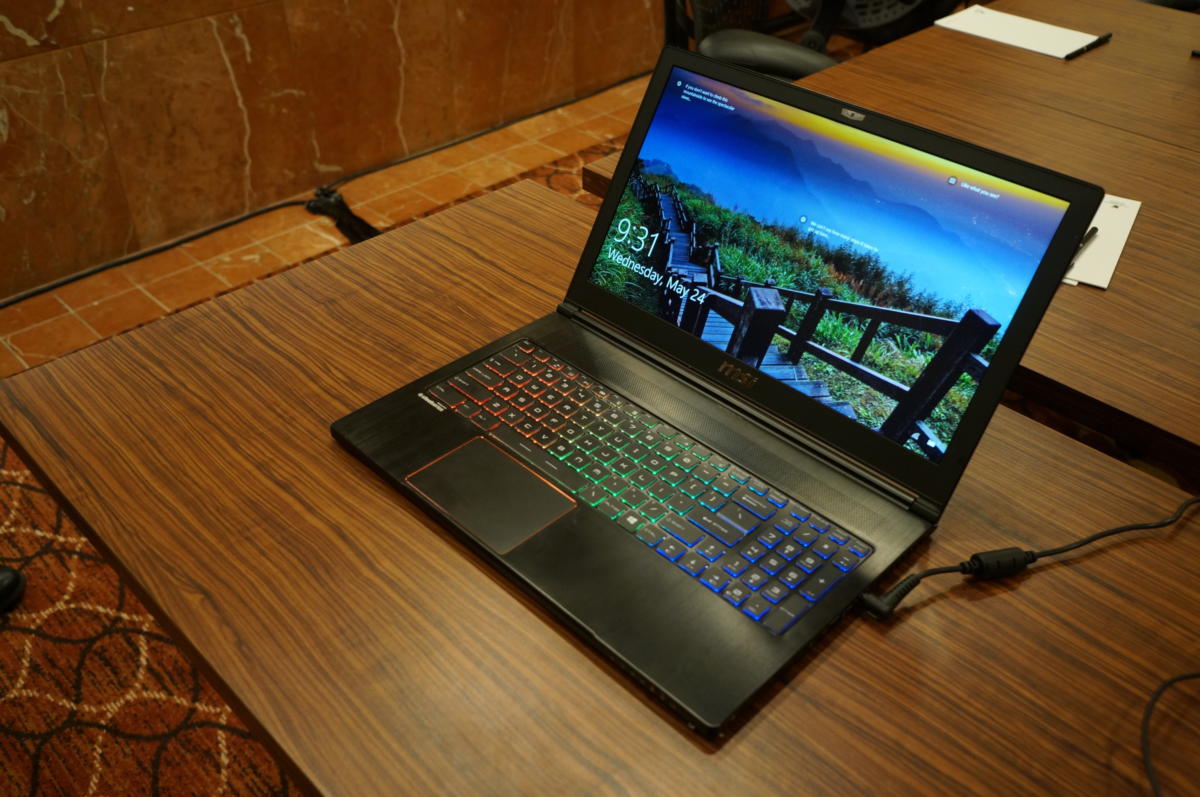
Nvidia’s Max-Q is arguably the most groundbreaking mobile graphics initiative in a generation, enabling gaming laptops to be built three times thinner with three times the performance (according to Nvidia) over previous designs.
Named after NASA’s initiative to put man into space, Nvidia said the technology is based on its current Pascal architecture which, when combined with ground-up designs from OEMs, puts unheard-of performance in super-thin laptops. “The results: a high-performance gaming platform, that is as small as 18mm thick—as thin as a MacBook Air —with up to 70 percent more gaming performance than what is currently available,” the company said in a release.
 IDG/Gordon Ung
IDG/Gordon UngThis new Asus Republic of Gamer laptop features a Max-Q GeForce GTX 1080 GPU and lower bottom that pops open for cooling when the lid is opened.
Before Max-Q, gaming laptops typically had to be larger and thicker to support the heavy cooling and power requirements of the a GPU. With the new technology, laptops that would previously have maxed out at a GeForce GTX 1060 will be able to give you GTX 1070- and GTX 1080-level performance. In other words, a laptop that could previously run a game at 1080p at very high settings would, with Max-Q, be able to run the game on Ultra settings without compromising image quality, or run the game on a 4K UltraHD screen.
 IDG/Gordon Mah Ung
IDG/Gordon Mah UngViewed through a thermal camera, this new Asus laptop features Nvidia’s new Max-Q technology and runs relatively quiet and cool.
The GPU models don’t appear to be new designs, but rather are built on better management of the Pascal chip. On a GeForce GTX 1080 laptop with Max-Q, Nvidia said: “ Max-Q combines a new way of operating the GPU for peak efficiency, with optimizations such as a low voltage optimized clock curve that wrings out gaming performance while reducing power.”
 IDG/Gordon Ung
IDG/Gordon UngWant thin-and-light with performance? This Clevo laptop features a Max-Q enabled GPU while weighing around 4.5 pounds.
WhisperMode
One problem with shoehorning powerful graphics into a thin gaming laptop is noise levels. Nvidia said it tackles that problem with a new WhisperMode feature. “WhisperMode intelligently paces the game’s frame rate while simultaneously configuring the graphics settings for optimal power efficiency,” the company said.
Nvidia said Max-Q laptops would be available as soon as June 27 from vendors including Acer, Alienware, Asus, Gigabyte, HP, Lenovo, Maingear, MSI, and Origin PC.
 IDG/Gordon Ung
IDG/Gordon UngNot every laptop will require a new design. This MSI features Max-Q but looks identical to the previous GS63VR.


